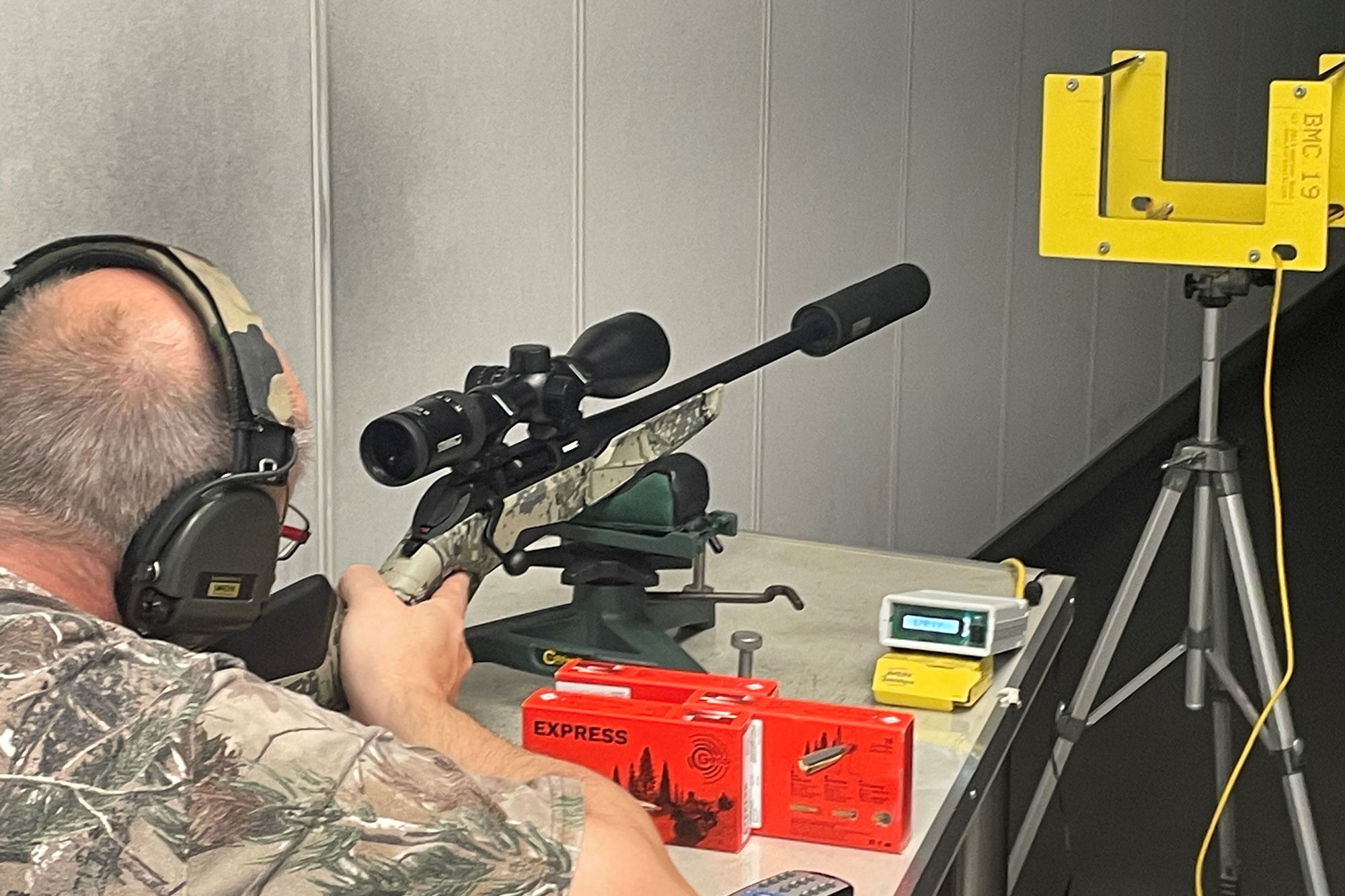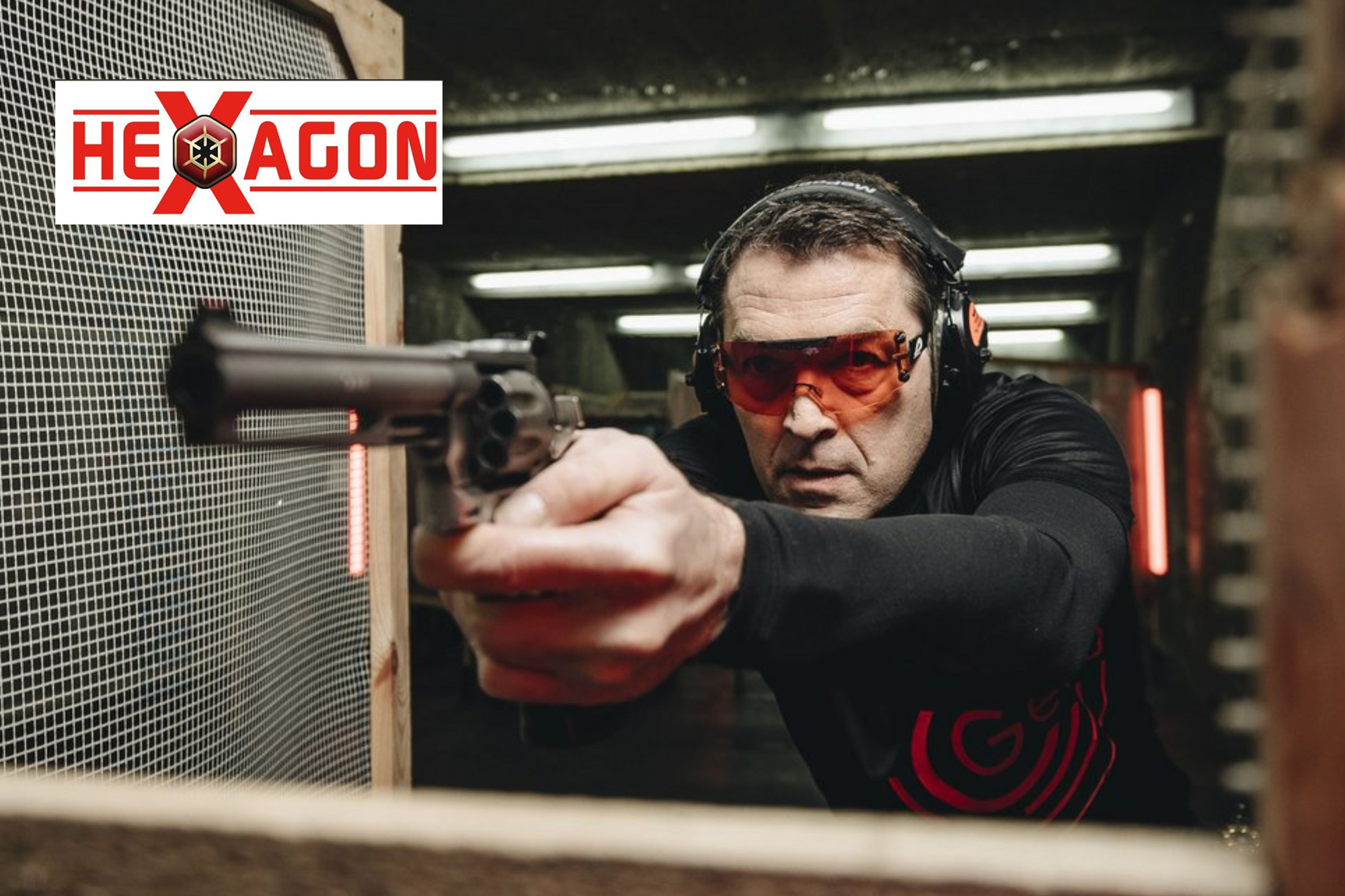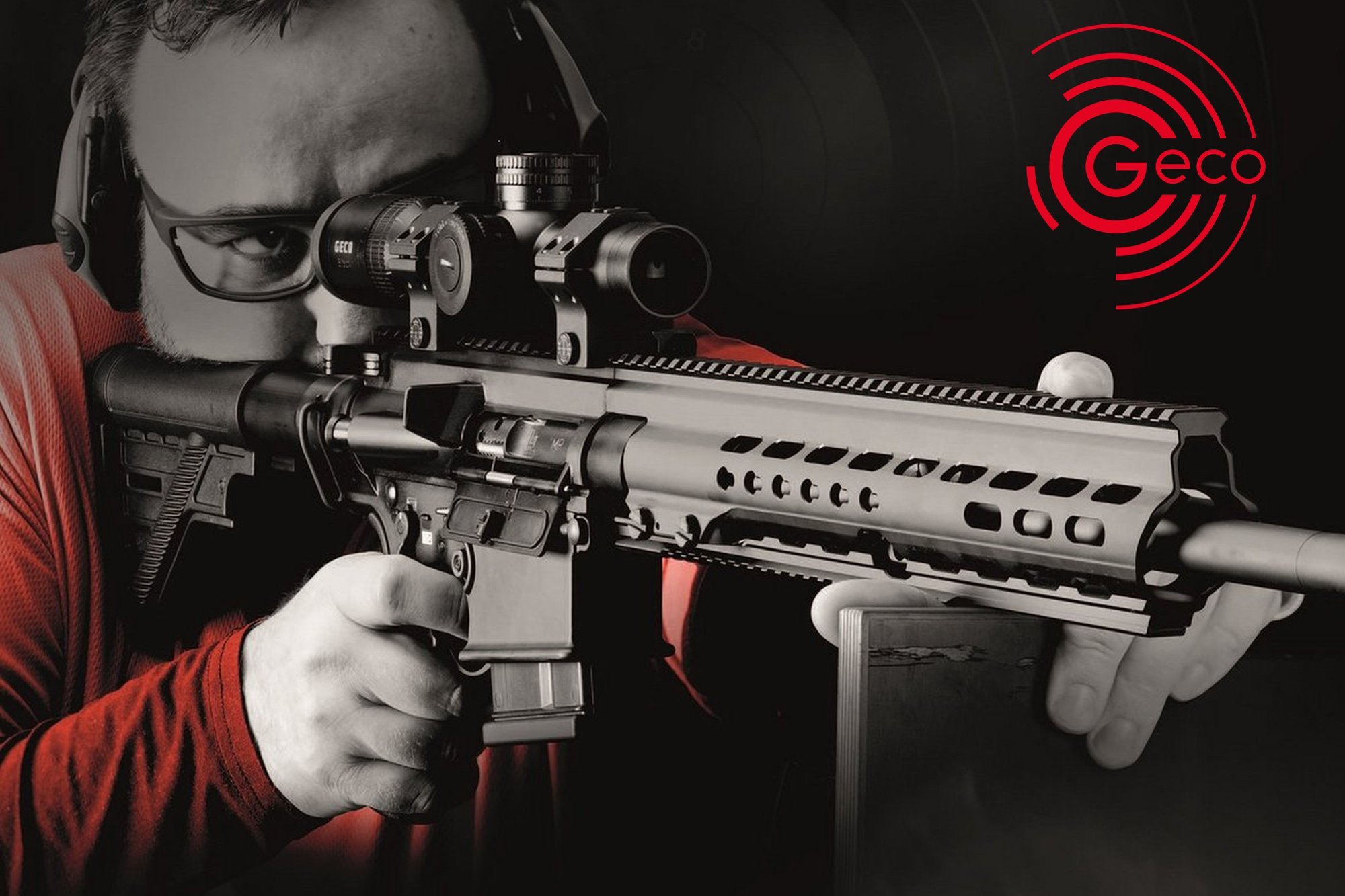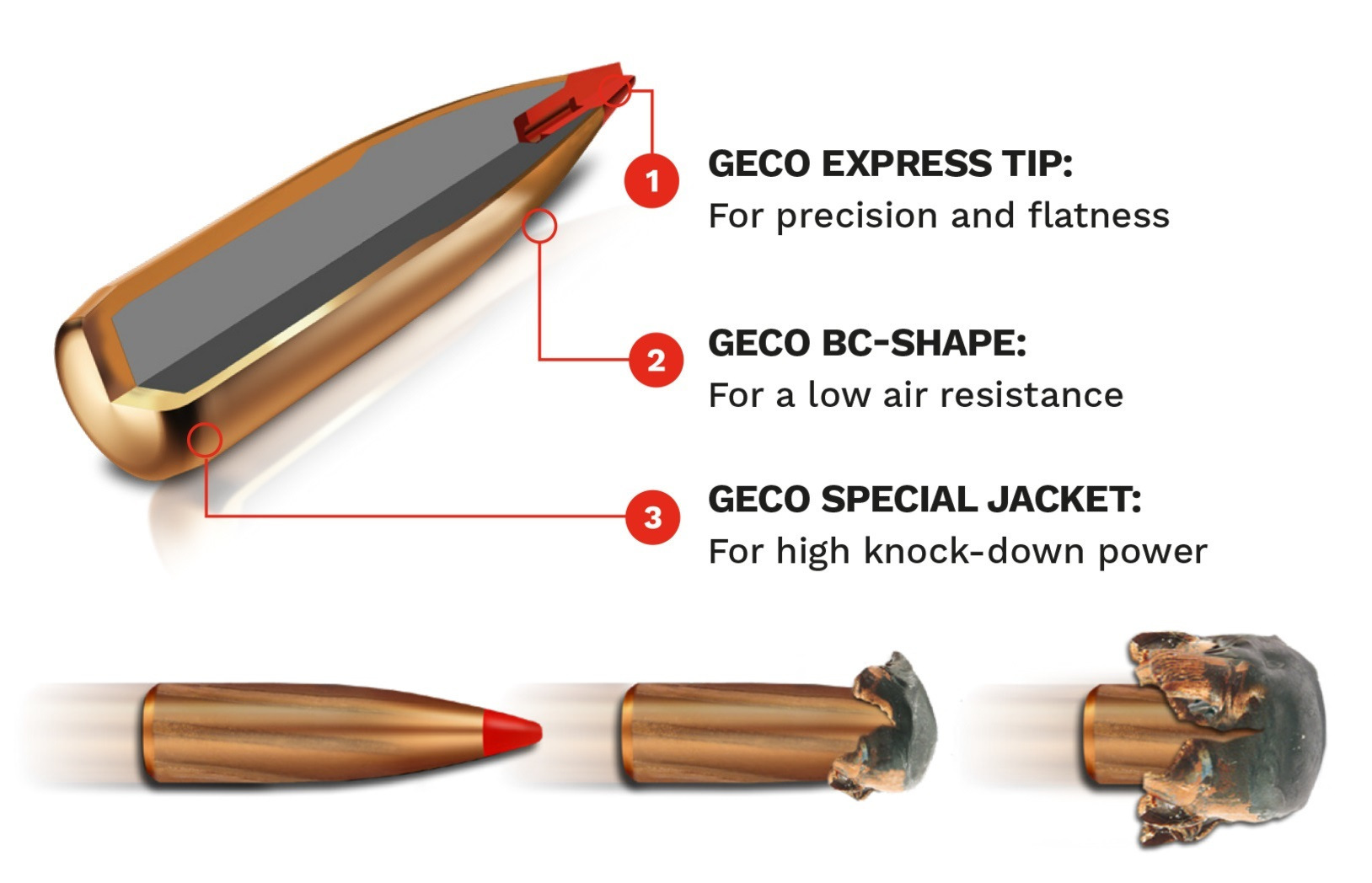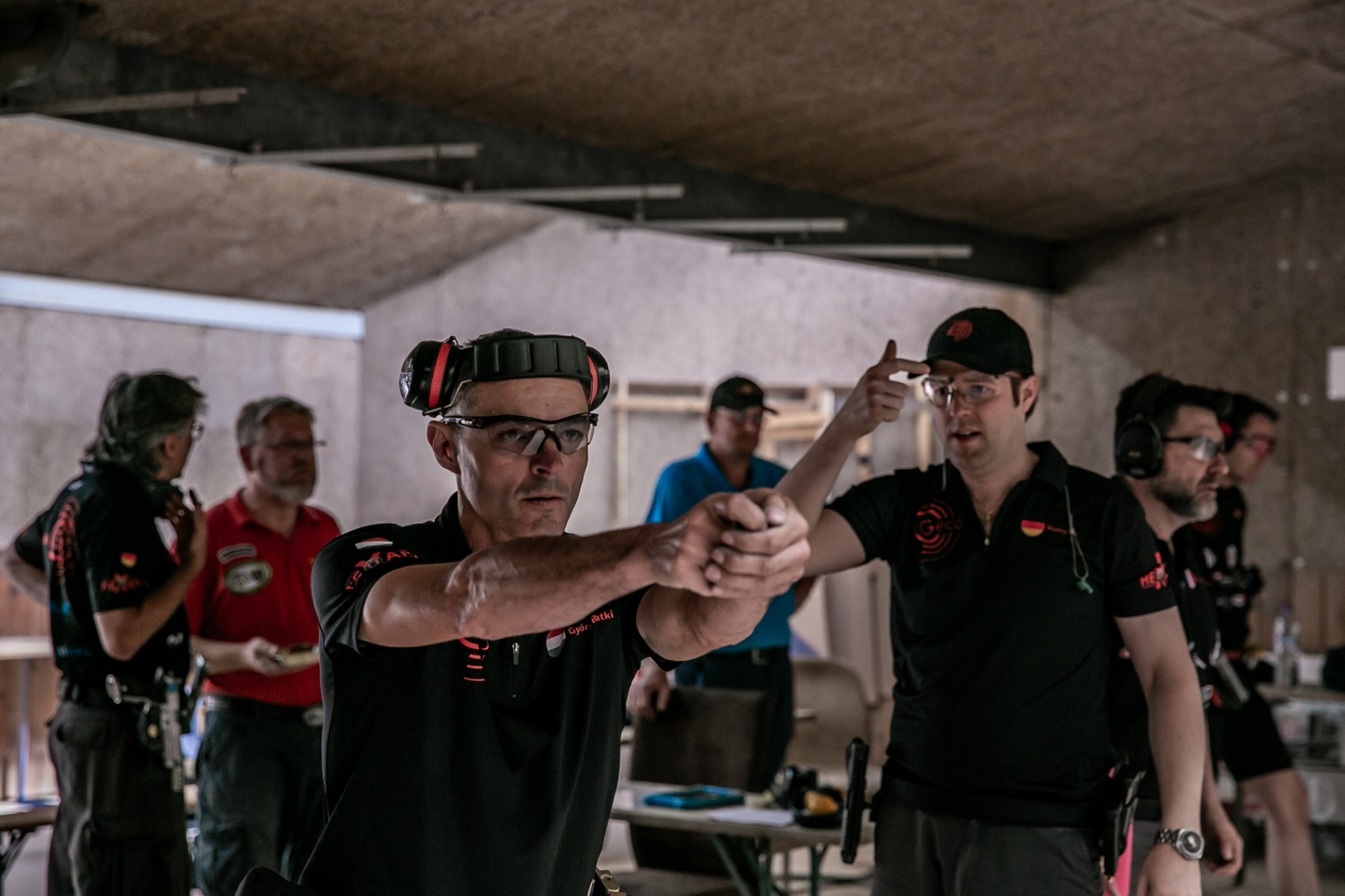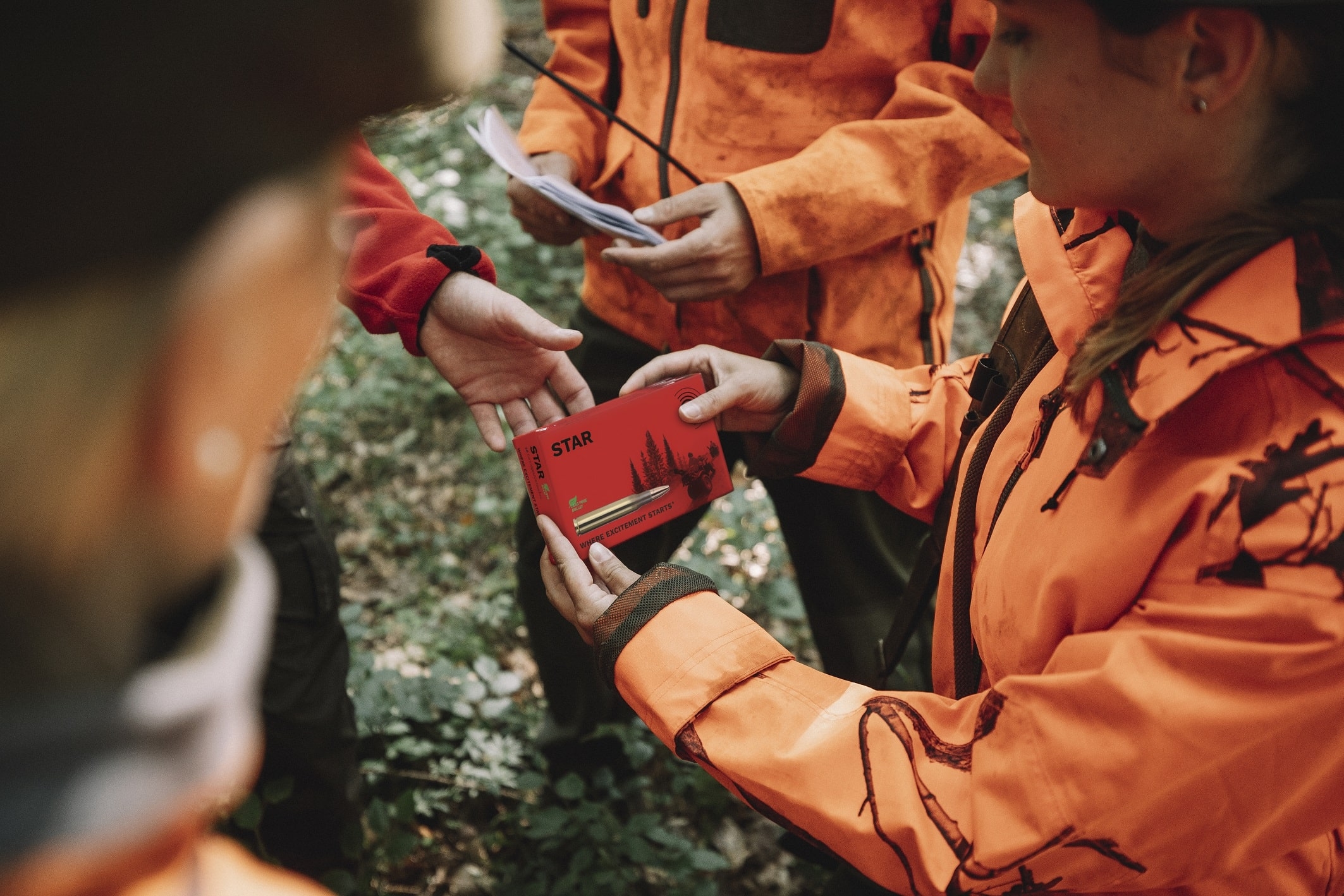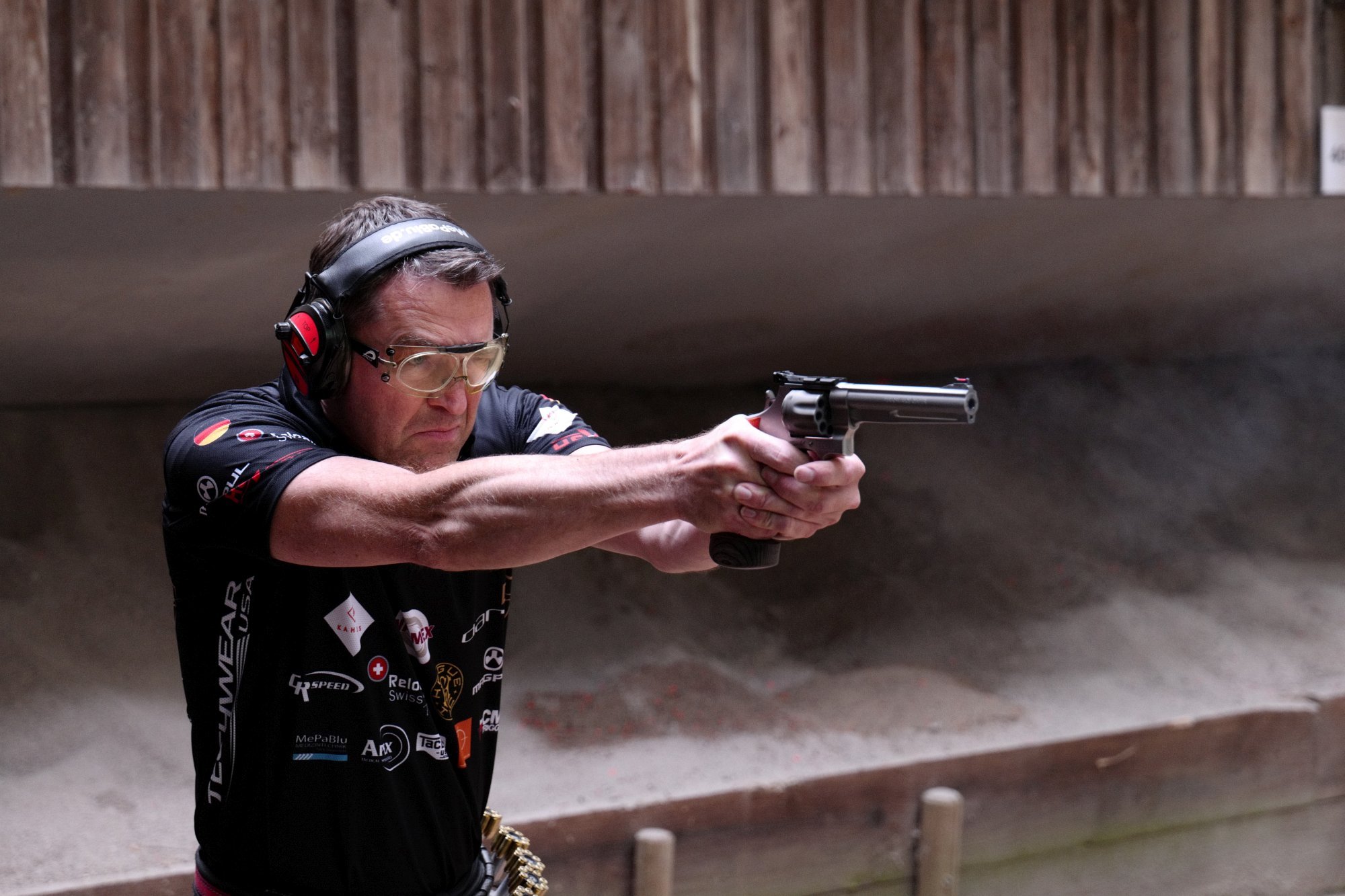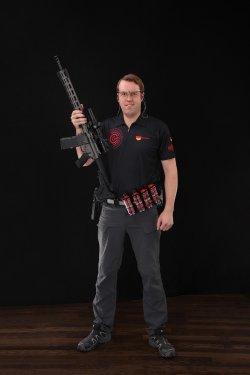
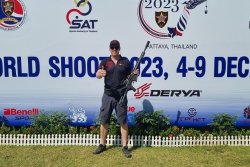
Nobody had expected this: Stefan Rumpler, a multi-gun shooter from the GECO team, delivered an impressive performance at the 4th IPSC World Shoot in Pattaya, Thailand, in December 2023: out of almost 200 participants in the Open Overall class of this IPSC World Championship, he secured a fabulous, but certainly equally unfortunate 4th place. Especially in the shoot-off, the decisive final for the spectators, Rumpler showed all his skills and was only narrowly defeated by 1:2 by the world champion Scott Greene from the USA.
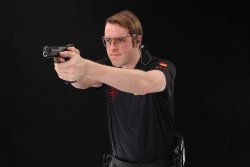
Rumpler's sport shooting career started with an air rifle instead of IPSC guns: the now 31-year-old family man from Fürth grew up in a "family of guns", as his father is a self-employed master gunsmith and specialist gun dealer, while his grandfather was a head forester. So he practically absorbed the "shooting gene" with his mother's milk and he and his younger brother Gernot were familiarised with firearms at a very early age, not least through the customers in their father's shop. As a result, Stefan Rumpler became a member of the privileged imperial and royal Mittersill Shooting Club in the idyllic Oberpinzgau region at the age of nine. He took his first steps in the shooting sport with an air rifle, so that his very first gun was a Walther LG300 with a blue aluminum stock and extended wooden fore-end.
Stefan Rumpler's first career began with the Olympic shooting disciplines and the centerfire rifle three-positions competition
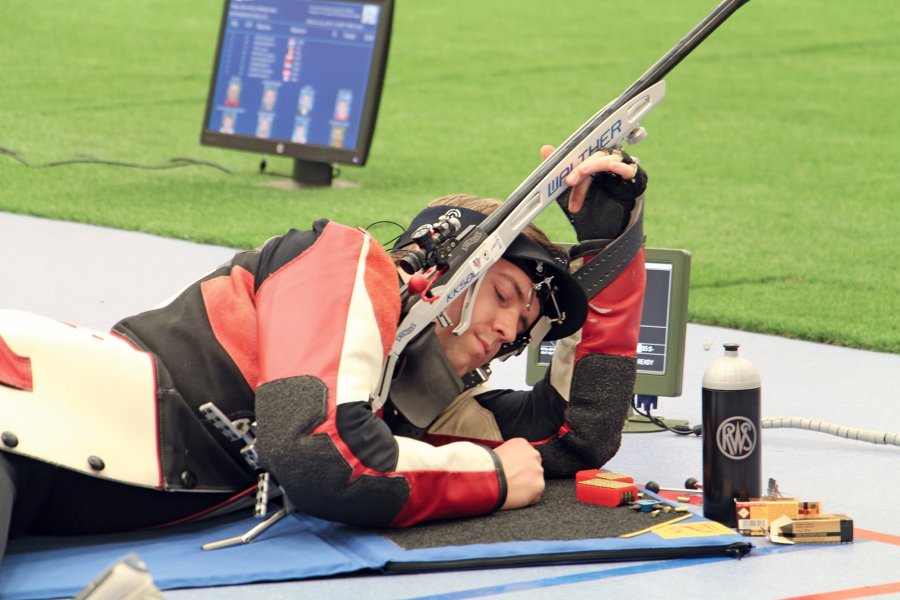
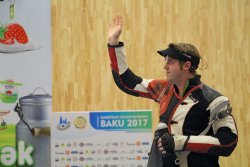
Thanks to his talent and training discipline, Stefan Rumpler achieved success very early on in the classic, Olympic ISSF shooting sport, expanding his range of disciplines over time from 10-m air rifle to 50-m rimfire rifle and 300-m centerfire rifle.
His greatest experiences and successes in this discipline include his participation in the first Youth Olympic Games in Singapore in 2010 and the team world championship title in the three-positions competition with the centerfire rifle at 300 metres in Changwon, South Korea, which he won together with his brother Gernot and Bernhard Pickl in 2018. It is probably fate that he also met his current wife, the mother of his two children, at the ISSF World Cup in Granada, Spain, in 2016.
IPSC ace Stefan Rumpler has found the ideal combination of profession and sport shooting career for himself
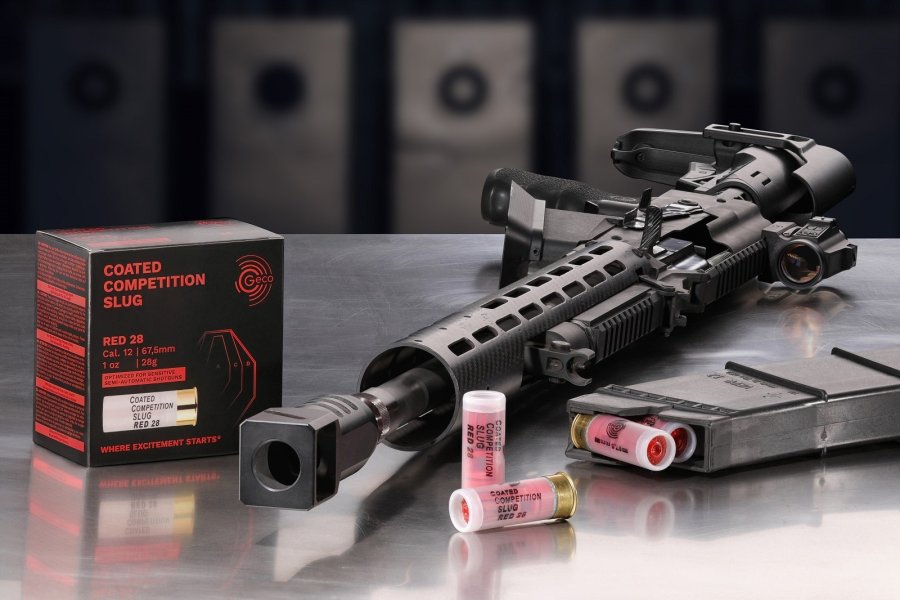
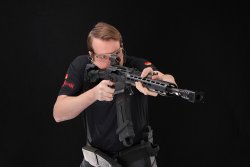
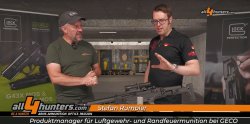
However, Stefan Rumpler is not only involved with firearms in his spare time, as the trained firearms engineer now works as a product manager at RWS GmbH in Fürth. So it's easy to guess that Stefan Rumpler is active in the world of firearms more or less around the clock. He came into contact with the dynamic IPSC shooting sport in Franconia in 2019 and became a member of the SLG Ironhands IPSC team in the German city of Lauf an der Pegnitz. As in the ISSF, he is broadly positioned in the IPSC in terms of diversity of disciplines, as the jack-of-all-trades competes with a pistol in the Production Division, with a rifle in the Rifle Open Division and with a shotgun in the Standard and Open Divisions. Thanks to his experience at major ISSF events and the clean shooting technique he has honed over many years, success was not long in coming. In dynamic shooting according to the rules of the International Practical Shooting Confederation (IPSC), his particularly memorable highlights to date include winning the German shotgun and 3-Gun course championship titles in 2022 and being nominated for the Production national team for the European Shotgun Championships and World Shotgun Championships in 2023.
How does all-round marksman Stefan Rumpler train?
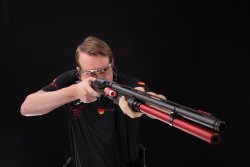
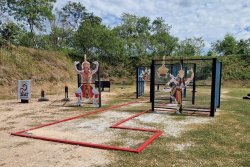
By his own admission, he fires around 20,000 rounds per year for each gun. In contrast to many other top shooters who concentrate exclusively on live fire, he also practises dry fire training several times a week. He does not use any specialised equipment for this, but only dummy cartridges. The dry training program naturally includes gun handling, drawing from the holster, reloading techniques and changing firing positions, which opens up many training opportunities for the three different types of firearms: rifle, shotgun and pistol. He visits the shooting range two to three times a week and starts the mandatory three-hour training session with two to three standard exercises that cover all the basic skills with the respective gun. This is followed by short drills, sometimes with a large number of repetitions, alternating between drills aimed at a specific skill. Parcours or more complex scenarios are rarely trained, as they take too long to prepare and set up. Stefan shoots between 200 and 500 cartridges per training session.
As a young family man, he has no time left over for recreational sports, so he keeps himself fit with special strengthening exercises and occasionally goes hunting or to the clay target range. Incidentally, Stefan Rumpler is an "ambidextrous" shooter who is equally skilful with both his right and left hands, which gives him an advantage when it comes to complex, dynamic reloading operations with a shotgun with a tubular magazine. He currently uses the "Twin Quad Load Shell Caddies" holders for eight shotgun shells from Double Alpha Academy (DAA), but based on his practical experience he would now swap them for competitor products from Awen, Magload or King Competition.
Stefan Rumpler's tips for beginners to IPSC shooting
Initially, you should not be afraid to gather information and instead quickly visit a club that offers the desired disciplines. Especially as a newcomer, it is difficult to get an overview of what you need and what is important. Here it is extremely helpful to ask around at the club, get lots of opinions in person and test a wide variety of guns and disciplines.
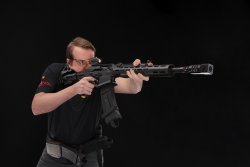
You should then decide as quickly as possible what you actually want. Do you really want to practise the sport ambitiously and therefore go to the shooting range several times a week or shoot a few shots occasionally as an exciting and fun leisure activity? For those who want to show ambition, he also recommends going to a competition as soon as possible, even if it is only as a spectator or helper at first, in order to socialise with active participants, range officers and other officials. This allows you to feel the competition flair at first hand and the direct information gained also makes it much easier to choose the right gun and other equipment. The shooters in the dedicated IPSC/action community in particular are always very eager to provide information and help. It is good manners to help and support each other.
Why Stefan Rumpler uses GECO ammunition in all his competition guns
Pistol: GECO 9mm Luger SX
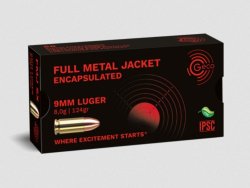
- The SX ammunition (here is the link to the website) is absolutely reliable in my gun, the accuracy is more than enough for IPSC and it delivers the required power factor according to IPSC rules (not every factory ammunition does this in a Laugo Arms Alien pistol).
- I train indoors a lot and this low-emission ammunition is an absolute blessing in terms of health.
- Thanks to the encapsulated bullet and the absolutely heavy-metal-free primer, my gun does not foul nearly as much as with conventional FMJ ammunition.
- The reasonable price allows the high number of shots required for IPSC training.
- In short, this ammunition is my absolute go-to cartridge for competition and training.
Shotgun: GECO Competition Slugs and GECO Buck Shot
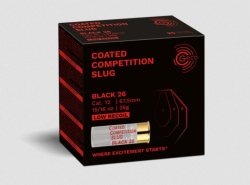
Stefan Rumpler comments: "We offer two different weight classes for coated slugs: CCS (for Coated Competition Slug) Black 26 g and CCS Red 28 g and that's a very good thing: In my Benelli M2 SP the lighter Slug Black 26g shoots hole in hole and the Red 28g does the same in my Armsan RS-S1 Open shotgun. Both work flawlessly in both guns, but there are differences in shooting performance due to the different barrel geometries.
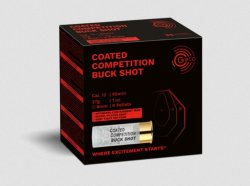
As for the GECO Buck Shot cartridges, which are also coated, a tight and, above all, consistent and repeatable pattern is absolutely essential to achieve "predictable" results for IPSC during a stage. The GECO Buck Shot delivers exactly that: absolutely reliable function and a predictable pattern characterise this cartridge. I have worked a lot with slug and buck shot cartridges and tested them. Many shooters are unsure when it comes to the Buck and/or Slug stages in competitions because they have already had a wide variety of experiences with their ammunition. I, on the other hand, can excel in the buck and slug exercises, as I can absolutely rely on the GECO cartridges and thus bag important points for the ranking. You can simply rely on the performance of GECO IPSC shotgun ammunition.
AR-15-based semi-auto rifles: GECO FMJ, GECO Target and RWS Target Elite Plus ammo in .223 Remington
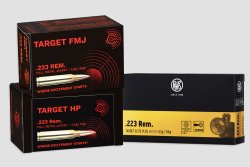
For his IPSC rifle, Stefan Rumpler relies on GECO and RWS ammunition with bullet weights between 52 and 69 grs: "My DAR 15SPR Custom uses our GECO FMJ 55-gr cartridges in .223 Remington to achieve very good groupings at all relevant ranges for IPSC (up to 300 m). Furthermore, the loads are so consistent from batch to batch that no adjustments to the gas block are required and the point of impact is also very consistent. This makes the GECO FMJ 55 gr my main choice for IPSC training and competition. For regular "accuracy testing" of my DAR I use RWS Target Elite Plus cartridges with 69-gr bullets. These cartridges produce absolutely fabulous groupings for .223 Remington and are therefore ideal for checking the condition of my rifle barrel. I am currently testing our new GECO Target HP 52 gr cartridges. Thanks to the slightly lower bullet weight, the recoil impulse is even softer. This load is therefore very interesting for pure "paper days" or for exercises where only paper targets up to approx. 200 m are to be shot at."
You can find a detailed portrait with a longer interview with Stefan Rumpler in GECO-World, where you can also get to know the other members of the international GECO team.




